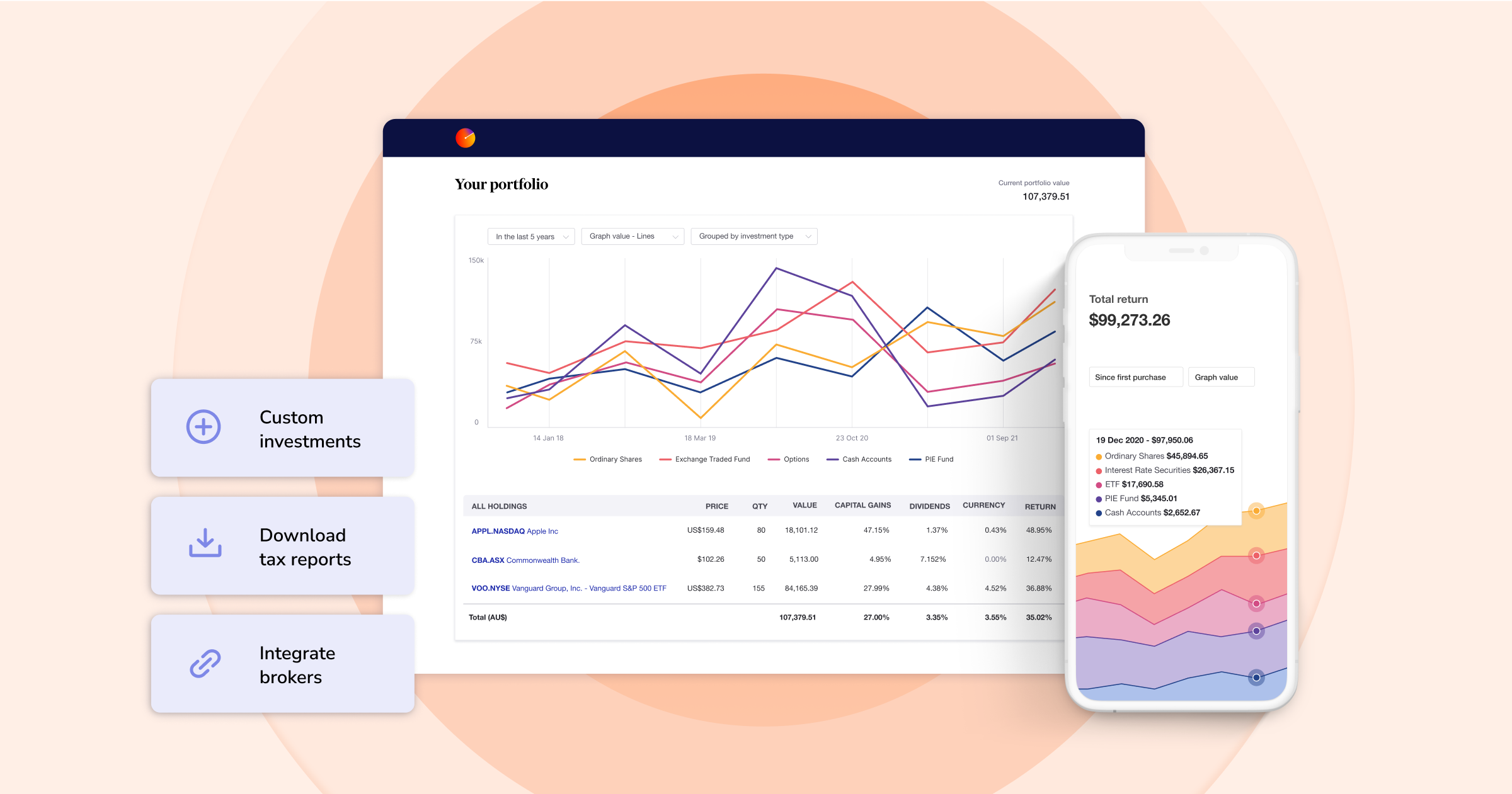What is risk diversification?
Risk diversification is the process of investing across a range of industries and categories within one portfolio. This ensures that even if some assets perform poorly, other areas of the portfolio associated with different sectors can cover the loss.
Essentially, it’s a way for investors to ensure they don’t have all their eggs stored in one basket. For this reason, diversification can allow investors to reach their long-term financial goals without being overexposed to risk.

What are the risks associated with investing?
There are two types of risks that may impact your investments: specific risks and market risks.
Specific risks
Specific risks apply to a particular industry, investment or company, affecting the value of any associated assets. If you only invested in computer or tech stocks, for example, and there was a shortage in raw silicon, this would be a specific risk that would affect your entire investment portfolio.
Market risks
Market risks (also known as volatility) are possible losses caused by factors that affect the entire market, such as wars and political conflict, stock price movements, and interest rate changes. You cannot diversify these risks, but you can hedge them by investing across various financial instruments.
How does diversification help reduce risk in investing?
Holding a wide variety of investments in your portfolio minimises the risk of a drastic loss by:
-
Giving your portfolio more stability. Risk and return diversification can allow the positive performance of your good investments to offset the negative performance of others.
-
Hedging your bets. Ensuring your investments are spread out over industries and sectors means you are less vulnerable to specific risks. If you own stocks in diverse industries such as banking, healthcare and agriculture, for instance, an event that affects one of those industries only affects the stock you hold from that particular industry. For example, during a drought, only your agricultural stock would perform negatively, while the rest of your portfolio could continue to do well. The less correlated your investments are, the better.
-
Diversifying across asset classes. By investing in a broad range of assets (e.g. bonds, stocks, real estate), you reduce the volatility and risk to your portfolio by holding investments that have a low correlation to one another.
Does risk diversification increase returns?
While risk diversification doesn’t necessarily increase the expected returns of your portfolio, it minimises the risks you face and ensures no single investment can impact you dramatically.
When you have invested in a range of assets and asset classes, you can never do worse than your worst stock or better than your best stock. The ups and downs of your different assets will balance each other out, smoothing out the returns on your investments.
What is the relationship between risk and return?
To start, let’s outline simple definitions of both risk and return.
Return is the money you anticipate making on your investment. This is often based on historical returns and is usually part of the reason you invest in an asset.
Risk is the possibility that you could lose money on your investment. It can be measured as the difference between the actual return you receive on an investment and how much this differs from your expected return.
Risk and return are positively correlated. The greater the risk, the greater the chance of making a profit or loss. According to the risk-reward tradeoff principle, lower risk is generally associated with lower returns and higher risk, with higher returns.
Can diversification eliminate market risk?
Market risks are external influences such as the rise and fall of the stock market, interest rates, and international conflict. These factors influence the performance of an entire portfolio, and cannot be mitigated by risk diversification.
Specific risks, however, can be avoided in part by investing in a variety of assets and asset classes that are not correlated, and therefore won’t all be affected in the same way by single events.
Benefits of risk diversification
Risk diversification comes with a variety of benefits including:
-
A more stable return on your investment, as a diversified portfolio will mean that as one stock fails, it is offset by other stocks that have succeeded.
-
Minimised losses across your whole portfolio, as single events can’t cause you to lose all your investment at once.
-
More opportunities for returns, as you have invested in a variety of assets and asset classes, and are exposed to a range of growth opportunities.
-
A safeguard against adverse market cycles.
How to use risk diversification within a portfolio
The three steps traditionally used for risk diversification are:
Step 1: Capital allocation
Capital allocation refers to diversifying investments between those that are risky and riskless. This is the first step to diversify your investments, in which you determine the overall risk your portfolio will be exposed to. This decision will also decide your investment portfolio’s level of return.
Step 2: Asset allocation
Asset allocation determines which asset classes you will invest in, based on the relative risk along with the expected returns of each asset class. When properly diversified, your entire portfolio’s risk can be lower than the risk of the sum of its assets. You may change your asset allocation as you go, investing in asset classes with lower risk as you approach retirement, in order to ensure safety and stability in your investment portfolio.
Step 3: Security selection
This involves selecting specific assets within each asset class. For example, if you chose to invest in stocks as part of your capital allocation, to achieve a diversified portfolio you would need to ensure you are investing in stocks from a variety of sectors and industries, ranging from small start-ups to large companies.
Calculate your investment diversification with Sharesight
Sharesight’s diversity report allows investors to calculate their diversification by asset allocation grouped by one of six criteria: Market, Sector classification, Industry classification, Investment type, Country or any custom group they define.
The diversity report allows investors to regularly rebalance their portfolio’s asset allocation in order to meet their risk diversification goals.
Track your global investments with Sharesight
If you’re not already a Sharesight user, it’s time to join the hundreds of thousands of investors using Sharesight to discover the true performance of their investment portfolio.
What are you waiting for? Sign up today and:
-
Track all of your investments in one place, including stocks, mutual funds, property and even cryptocurrency
-
Automatically track your dividend and distribution income from stocks, ETFs and mutual funds from over 40 global exchanges
-
Take advantage of a suite of powerful reports built for investors, such as performance, portfolio diversity, contribution analysis and future income (upcoming dividends)
-
Easily share access of your portfolio with family members, your accountant or other financial professionals so they can see the same picture of your investments as you do
Sign up for a FREE Sharesight account and get started calculating your investment performance today.
Disclaimer: This article is for informational purposes only and does not constitute a specific product recommendation, or taxation or financial advice and should not be relied upon as such. While we use reasonable endeavours to keep the information up-to-date, we make no representation that any information is accurate or up-to-date. If you choose to make use of the content in this article, you do so at your own risk. To the extent permitted by law, we do not assume any responsibility or liability arising from or connected with your use or reliance on the content on our site. Please check with your adviser or accountant to obtain the correct advice for your situation.

FURTHER READING

Morningstar analyses Australian investors' top trades of FY25
In this article, Morningstar reviews the key events of FY25 and shares three stocks their analysts are watching closely.

Key takeaways from SIAA 2025: Trends, insights & industry highlights
We summarise the key takeaways from the 2025 SIAA conference in Sydney, covering industry insights, market trends and the future of financial advice.

5 ways Sharesight keeps your data safe
Here at Sharesight, we maintain constant vigilance around cyber security. In this blog, we discuss five ways Sharesight keeps your data safe.